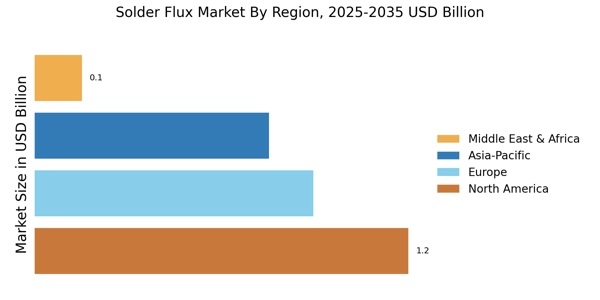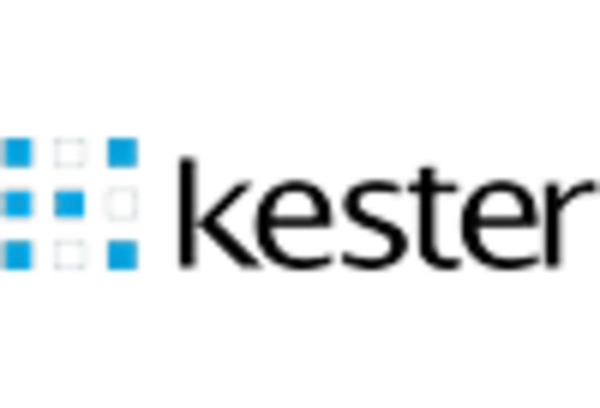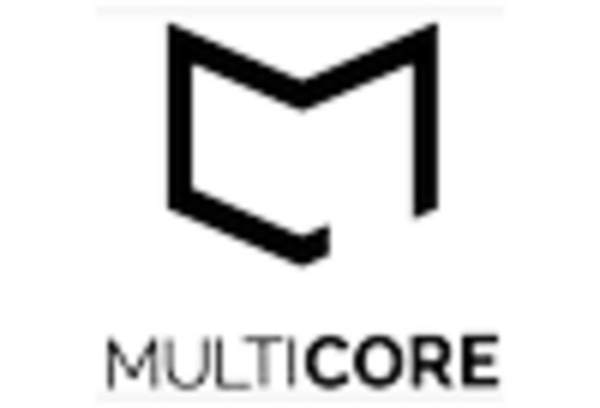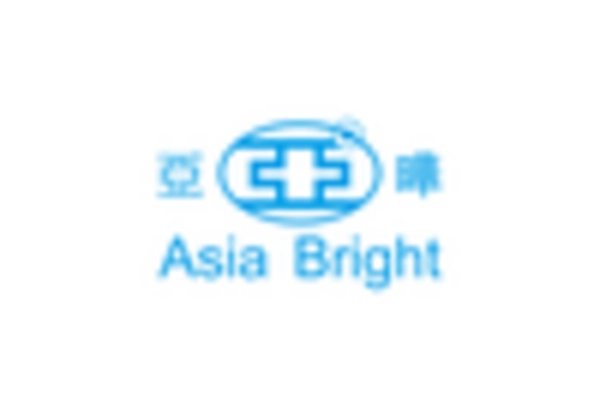Rising Demand for Electronics
The Solder Flux Market is experiencing a notable surge in demand, primarily driven by the increasing production of electronic devices. As consumer electronics, automotive electronics, and industrial automation continue to expand, the need for efficient soldering processes becomes paramount. In 2025, the electronics sector is projected to grow at a compound annual growth rate of approximately 5.5%, which directly influences the solder flux market. This growth is attributed to the proliferation of smart devices and the Internet of Things, necessitating advanced soldering materials that ensure reliability and performance. Consequently, manufacturers are compelled to innovate and enhance their solder flux formulations to meet the evolving requirements of the electronics industry.
Growth in Renewable Energy Sector
The Solder Flux Market is poised for growth due to the increasing investments in renewable energy technologies, particularly solar and wind energy. As the demand for solar panels and wind turbines rises, the need for reliable soldering materials becomes critical. In 2025, the renewable energy sector is expected to expand significantly, with solar energy installations projected to increase by over 20% annually. This growth necessitates the use of high-performance solder flux that can withstand harsh environmental conditions while ensuring optimal electrical conductivity. Manufacturers in the solder flux market are likely to focus on developing specialized products tailored for the renewable energy sector, thereby capitalizing on this emerging opportunity.
Increasing Focus on Miniaturization
The Solder Flux Market is significantly influenced by the ongoing trend of miniaturization in electronic components. As devices become smaller and more compact, the soldering processes must adapt to accommodate these changes. The demand for high-performance solder flux that can effectively work with microelectronics is on the rise. In 2025, the miniaturization trend is expected to continue, with the market for microelectronic devices projected to grow at a rate of 6% annually. This shift necessitates the development of solder flux products that can provide excellent wetting properties and reliability in tight spaces. Manufacturers are likely to invest in research and development to create solder flux solutions that meet the unique challenges posed by miniaturized electronics.
Regulatory Compliance and Standards
The Solder Flux Market is significantly impacted by stringent regulatory frameworks and industry standards aimed at ensuring product safety and environmental sustainability. Regulations such as RoHS and REACH have compelled manufacturers to develop solder flux products that are compliant with these guidelines. As of 2025, the market is witnessing a shift towards low-VOC and halogen-free solder flux formulations, which are not only environmentally friendly but also align with consumer preferences for sustainable products. This regulatory landscape drives innovation within the solder flux market, as companies strive to meet compliance while maintaining performance standards. The emphasis on regulatory adherence is likely to shape product development strategies in the solder flux market for years to come.
Advancements in Manufacturing Technologies
The Solder Flux Market is benefiting from advancements in manufacturing technologies, particularly in automation and robotics. The integration of automated soldering processes enhances precision and efficiency, leading to a higher demand for specialized solder flux formulations. In 2025, the adoption of Industry 4.0 practices is expected to revolutionize production lines, with smart factories utilizing real-time data analytics to optimize soldering operations. This trend not only improves product quality but also reduces waste, making solder flux an integral component of modern manufacturing. As companies seek to enhance their competitive edge, the focus on innovative solder flux solutions that complement these advanced manufacturing technologies is likely to intensify.


















Leave a Comment